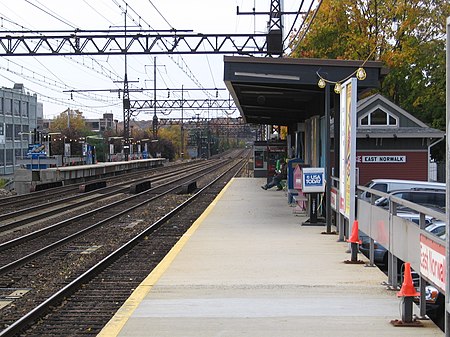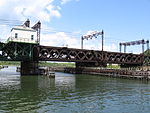East Norwalk station
1885 establishments in ConnecticutBuildings and structures in Norwalk, ConnecticutMetro-North Railroad stations in ConnecticutPages with no open date in Infobox stationRailroad stations in Fairfield County, Connecticut ... and 4 more
Railway stations opened in 1885Stations along New York, New Haven and Hartford Railroad linesStations on the Northeast CorridorUse mdy dates from January 2023

East Norwalk station is a commuter rail station on the Metro-North Railroad New Haven Line, located in the East Norwalk neighborhood of Norwalk, Connecticut. The station building was constructed by Metro-North in the 1980s.The Founder's Stone Monument, which formerly located at East Avenue and Fitch Street, is adjacent to the station. It marks the earliest Norwalk settlement and adjacent first Meeting House (seat of government), which were located at its former site.
Excerpt from the Wikipedia article East Norwalk station (License: CC BY-SA 3.0, Authors, Images).East Norwalk station
East Avenue, Norwalk
Geographical coordinates (GPS) Address Nearby Places Show on map
Geographical coordinates (GPS)
| Latitude | Longitude |
|---|---|
| N 41.104 ° | E -73.4045 ° |
Address
East Norwalk
East Avenue
06855 Norwalk
Connecticut, United States
Open on Google Maps








